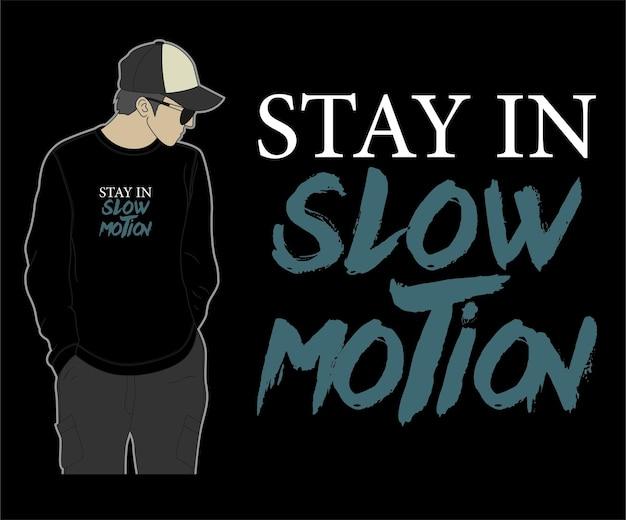Have you heard of the law of motion that states, “an object in motion stays in motion unless acted on by an external force”? This law is not only applicable to physics and mechanics but also to our lives. When we keep moving forward, we tend to stay in motion and achieve our goals, but when we stop, it can be challenging to regain momentum.
We all face moments in our lives where we feel stuck, unmotivated, or even lost. The key is to find ways to stay in motion. This could be through exercise, new hobbies, goal setting, or even changes in our daily routines. The benefits of staying in motion are immense, from increased productivity and creativity to improved physical and mental health.
Speaking of exercise, have you heard the popular phrase, “a body in motion stays in motion”? Regular exercise not only helps keep our bodies healthy but also our minds. It can help us stay focused, reduce stress, and improve our mood. So if you’re feeling sluggish or uninspired, maybe it’s time to take a brisk walk or hit the gym to get those endorphins pumping.
On the other hand, if we let external forces dictate our lives, we may find ourselves drifting along without clear objectives or direction. It’s easy to let external distractions pull us off course, but by staying in motion, we build resilience and can overcome any obstacles that come our way.
In this blog post, we’ll explore various ways to stay in motion and how it can benefit our daily lives. By incorporating simple practices like exercise and goal setting, we can keep moving forward to achieve our goals and live our best lives. Let’s embrace the power of staying in motion!
An Object in Motion Stays in Motion Law
We’re all familiar with the phrase “an object in motion stays in motion” and wondered why and how that works. Well, it’s all thanks to a fundamental law of physics known as the law of inertia.
What is the Law of Inertia
Let’s break down the concept of the law of inertia. The law of inertia states that an object at rest will remain at rest, and an object in motion will remain in motion with a constant velocity unless acted upon by an external force. This means that an object needs a force to start moving, stop moving, or change direction.
How Does the Law of Inertia Apply to Us
The law of inertia applies to our everyday life in several ways. Here are some examples:
- When driving, we need brakes to stop the car because it’s still in motion, and we need an external force to stop it.
- When we ride a bike, we need to keep pedaling to keep moving, and when we stop pedaling, we stop moving because there’s no external force propelling us forward.
- When we’re on a swing, we need someone to push us initially, and once we’re in motion, we keep swinging until we apply brakes or someone stops us.
How Can We Apply the Law of Inertia in Our Lives
We can use the concept of the law of inertia to motivate ourselves to stay in motion and be productive. Here are some ways we can apply it to our lives:
- Start by taking small steps towards achieving our goals and keep building momentum.
- Keep working even when we face obstacles and setbacks because progress, no matter how small, is still progress.
- Take breaks when needed, but don’t let them turn into long periods of inactivity that can derail our progress.
- Keep learning and growing to avoid falling stagnant and losing momentum.
The law of inertia states that an object in motion stays in motion, and the same applies to us. By understanding this simple but powerful concept, we can motivate ourselves to keep moving forward and achieve our goals. Remember, progress, no matter how small, is still progress.
A Body in Motion Stays in Motion: The Power of Exercise
Staying active is crucial not just for physical health but also for overall wellbeing. Regular exercise provides numerous benefits, such as improved cardiovascular health, enhanced mood, and increased energy levels. Here’s why a body in motion stays in motion, and how exercise plays a critical role in keeping us fit and healthy.
Benefits of Exercise
- Regular exercise improves cardiovascular health by strengthening the heart and improving circulation.
- Exercise helps to promote weight loss and maintain a healthy body weight.
- Physical activity is an excellent stress-reliever that helps to alleviate symptoms of anxiety and depression.
- Exercise is crucial for maintaining overall physical fitness, including flexibility, strength, and endurance.
- Regular exercise can help to reduce the risk of developing chronic illnesses such as diabetes, heart disease, and certain types of cancer.
- A body in motion stays in motion- exercising regularly can help to increase energy levels throughout the day.
Tips for Starting an Exercise Routine
Starting an exercise routine can be challenging, but it’s not impossible. Below are some tips to help you get started:
- Create a workout plan that includes both cardiovascular and strength-training exercises.
- Start slow and gradually increase the intensity and duration of your workouts.
- Find an activity that you enjoy, such as swimming, biking, or dancing, to make it easier to stick to your routine.
- Set realistic goals and track your progress to stay motivated.
- Get a workout buddy to keep you accountable and provide support and encouragement.
Keeping our bodies in motion is critical to maintaining physical health, mental wellbeing and staying in motion. Exercise is one of the best ways to achieve this. Regular physical activity brings numerous benefits and can help to reduce the risk of developing chronic illnesses. By following the tips outlined in this article, anyone can start an exercise routine and enjoy the many benefits that come with it.
Stay in Motion: Exploring the Concept of Momentum
Things in Motion Stay in Motion Unless Acted Upon
The concept of momentum is fundamental in many areas of science, particularly in physics. It states that an object in motion will remain in motion unless acted upon by an outside force. This is why we often hear the phrase “things in motion stay in motion unless acted on by an outside force.”
So, how does this apply to our daily lives? The concept of momentum is not just limited to physics; it can be applied to other aspects of our lives as well. Here are some examples:
1. Productivity
We all know the feeling of being in the groove of work – you’re ticking off tasks one by one and making progress. Conversely, we also know the feeling of being stuck in a rut, struggling to get started on anything. This is where momentum comes into play. Just like an object in motion stays in motion, once you’ve started to be productive, it becomes easier to maintain that mindset and keep ticking off tasks. The important thing is to get started – even if it’s just with one small task.
2. Exercise
Exercise is an excellent example of the concept of momentum. Getting started is often the hardest part, but once you’re in motion and your body is warmed up, it becomes easier to keep going. Similarly, if you take a break from exercise, it can be challenging to start again. This is why it’s essential to stay consistent – even if it’s just a small amount of exercise each day.
3. Relationships
Maintaining positive relationships with friends, family, and loved ones requires effort and consistency. Just like an object in motion stays in motion, relationships that are nurtured and cared for tend to stay positive and healthy. On the other hand, neglect and lack of effort can cause relationships to come to a halt or even break apart.
4. Learning
The concept of momentum can also be applied to learning. Once you start to understand a new idea or concept, it becomes easier to build upon that knowledge and keep learning. Conversely, if you take a break from learning, it can be tough to get back into the swing of things. The key is to maintain curiosity and keep exploring new ideas.
In conclusion, the concept of momentum is a powerful force that extends beyond just physics. It’s an essential aspect of our daily lives that can help us maintain productivity, exercise regularly, maintain healthy relationships, and keep learning new things. By understanding the concept of things in motion staying in motion, we can leverage this force to improve our lives in countless ways.


